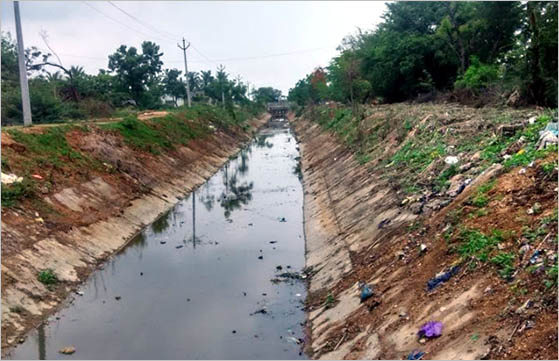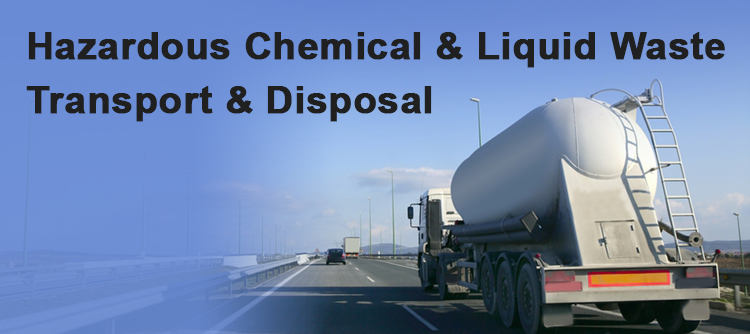Cutting-edge Industrial Wastewater Treatment Solutions: Shielding the Setting
Cutting-edge Industrial Wastewater Treatment Solutions: Shielding the Setting
Blog Article
Just How Liquid Waste Disposal Functions: An In-depth Review of Strategies and Technologies Employed

Review of Fluid Waste Types
The intricacy of fluid waste kinds requires a complete understanding of their characteristics and implications for disposal. Liquid waste can broadly be categorized right into numerous types, including industrial, municipal, farming, and unsafe waste. Each group exhibits distinct residential or commercial properties, requiring specific monitoring strategies to reduce environmental and wellness dangers.
Industrial liquid waste originates from manufacturing procedures and often has a series of pollutants, such as heavy steels, solvents, and natural compounds. Municipal fluid waste, mostly making up wastewater from homes and commercial facilities, includes natural issue, nutrients, and pathogens (industrial wastewater treatment). Agricultural liquid waste, consisting of runoff from ranches, may contain plant foods, pesticides, and animal waste, presenting risks to water top quality and environments
Dangerous fluid waste is identified by its toxicity, reactivity, or possible to cause injury. Recognizing these diverse fluid waste kinds is crucial for establishing reliable disposal approaches and guaranteeing compliance with ecological laws.
Physical Treatment Methods

Testing is the first action, where bigger bits and debris are eliminated from the liquid waste using displays or grates. This procedure shields downstream tools from damages and ensures smoother operation. Adhering to testing, sedimentation uses gravitational force to separate solids from fluids. In sedimentation storage tanks, much heavier particles settle at the base, creating a sludge layer, while the cleared up liquid can be more dealt with.
Filtration is an additional necessary method that entails passing the liquid through permeable materials, such as sand or membrane layers, to capture smaller sized bits. This action improves the top quality of the liquid, making it suitable for subsequent therapy processes.

Chemical Treatment Methods
Chemical therapy methods are essential for properly handling fluid waste, especially in resolving dissolved and colloidal impurities that physical methods may not adequately eliminate. These strategies utilize different chemical representatives to neutralize, speed up, or change dangerous compounds right into less damaging kinds.
One common technique is coagulation and flocculation, where chemicals such as alum or ferric chloride are contributed to advertise the aggregation of suspended bits. This procedure enhances link sedimentation, permitting less complicated elimination of the resulting sludge. Additionally, oxidation processes, utilizing representatives like chlorine or ozone, are used to break down complicated organic substances and virus, providing the waste safer for discharge or further treatment.
Neutralization is one more essential technique, which changes the pH of acidic or alkaline waste streams to neutral levels, stopping possible advice injury to downstream systems and the setting. Furthermore, advanced oxidation processes (AOPs) utilize combinations of oxidants and ultraviolet light to deteriorate consistent contaminants, accomplishing a higher level of treatment effectiveness.
Biological Therapy Procedures
Organic therapy procedures play a critical function in the monitoring of fluid waste by making use of bacteria to decompose organic issue and reduce impurity degrees. These processes can be generally classified right into cardiovascular and anaerobic treatments, each employing certain microbial neighborhoods to accomplish effective waste degradation.
Aerobic therapy includes using oxygen to assist in the break down of organic products by microorganisms. This process is typically implemented in turned on sludge systems, where oygenation storage tanks offer a conducive setting for microbial growth, resulting in the oxidation of natural toxins. The resultant biomass can be separated from dealt with effluent with sedimentation.
On the other hand, anaerobic therapy happens in the absence of oxygen, counting on various bacteria to damage down raw material. This approach is especially advantageous for high-strength waste, as it produces biogas, a renewable resource source, while reducing sludge manufacturing. Technologies such as anaerobic digesters are frequently used in industrial and metropolitan applications.
Both anaerobic and cardio biological therapies not only minimize the ecological impact of fluid waste but additionally help with source healing, making them important parts of sustainable waste administration strategies. Their efficiency, efficiency, and flexibility support their prevalent application across different fields.
Emerging Technologies in Disposal
Ingenious strategies to fluid waste disposal are quickly progressing, driven by advancements in innovation and a boosting focus on sustainability. Amongst these emerging technologies, membrane bioreactors (MBRs) have gained traction for their capability to integrate organic therapy with membrane layer filtering, resulting in high-quality effluent that can be reused in various applications. MBRs allow smaller footprints and a lot more effective procedures contrasted to typical systems.
An additional encouraging growth is using anaerobic digestion my company combined with nutrient recuperation modern technologies, which not just deals with liquid waste yet additionally creates biogas and recoups beneficial nutrients like nitrogen and phosphorus. This twin advantage improves resource effectiveness and minimizes environmental impact.
Additionally, advanced oxidation procedures (AOPs) are being taken on for the deterioration of complicated organic pollutants. These methods make use of effective oxidants and stimulants to damage down pollutants at the molecular level, offering a highly reliable service for difficult waste streams.
Furthermore, the integration of expert system and device knowing in waste monitoring systems is optimizing functional effectiveness and predictive upkeep, causing lowered costs and boosted ecological compliance. These modern technologies show a considerable shift in the direction of more lasting and reliable fluid waste disposal techniques.
Final Thought
In conclusion, reliable liquid garbage disposal necessitates an extensive understanding of different techniques and innovations. The integration of physical, chemical, and organic therapy techniques makes certain the effective monitoring of diverse waste kinds. Furthermore, the introduction of innovative innovations boosts treatment effectiveness and advertises sustainability in waste management techniques. By continually progressing these methods, it comes to be possible to attend to the expanding difficulties connected with liquid waste, ultimately adding to environmental management and resource healing.
Fluid waste disposal is a crucial element of environmental administration, needing a thorough understanding of numerous strategies and modern technologies customized to various waste kinds. Fluid waste can generally be classified right into numerous kinds, consisting of industrial, local, agricultural, and harmful waste. Agricultural liquid waste, including runoff from farms, may contain fertilizers, chemicals, and pet waste, posturing threats to water top quality and ecological communities.
Numerous physical therapy approaches play an essential duty in handling liquid waste efficiently - industrial wastewater treatment.In conclusion, effective fluid waste disposal demands a detailed understanding of various techniques and modern technologies
Report this page